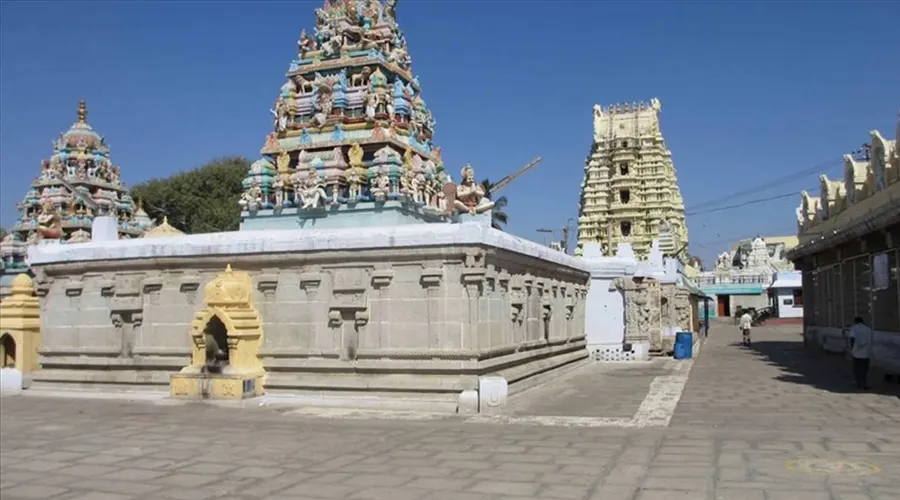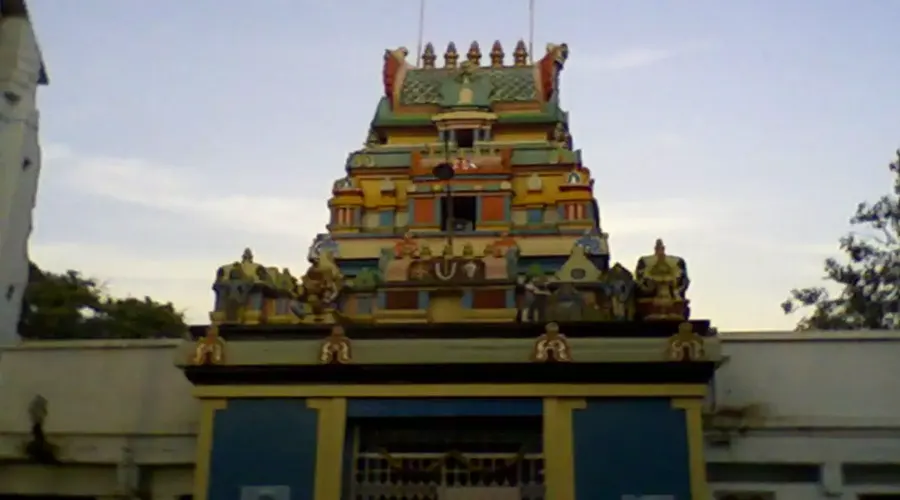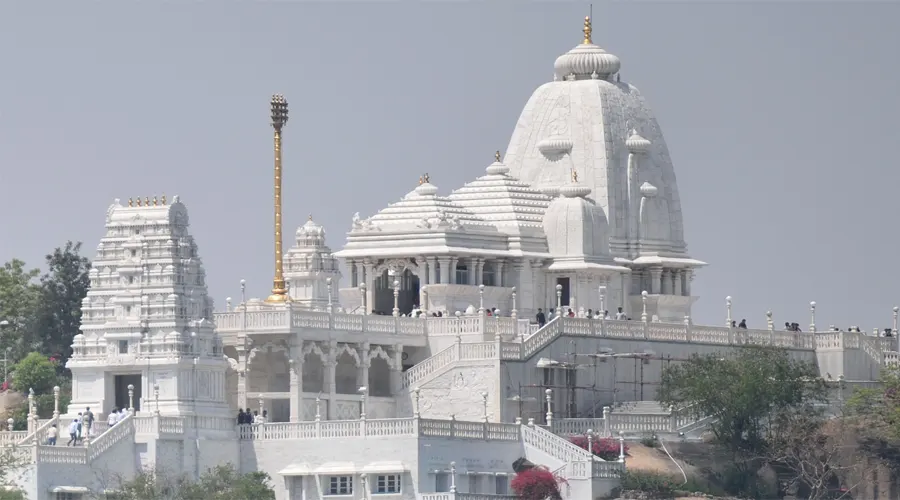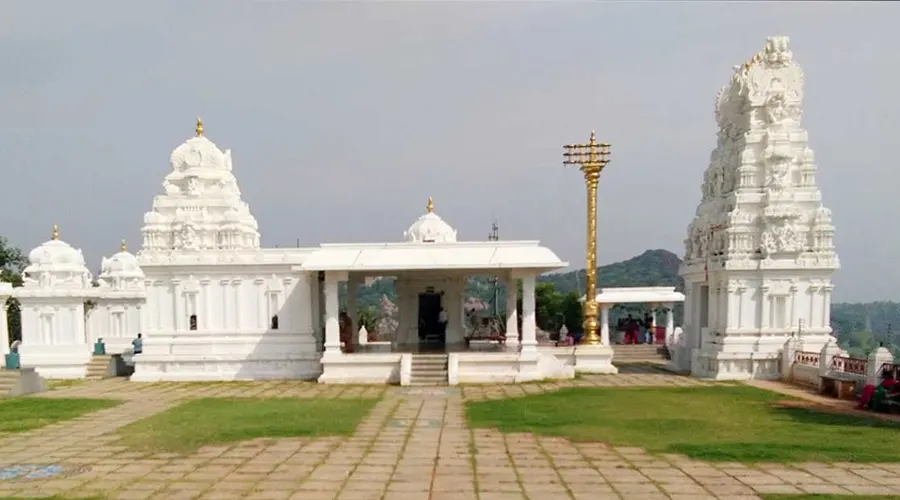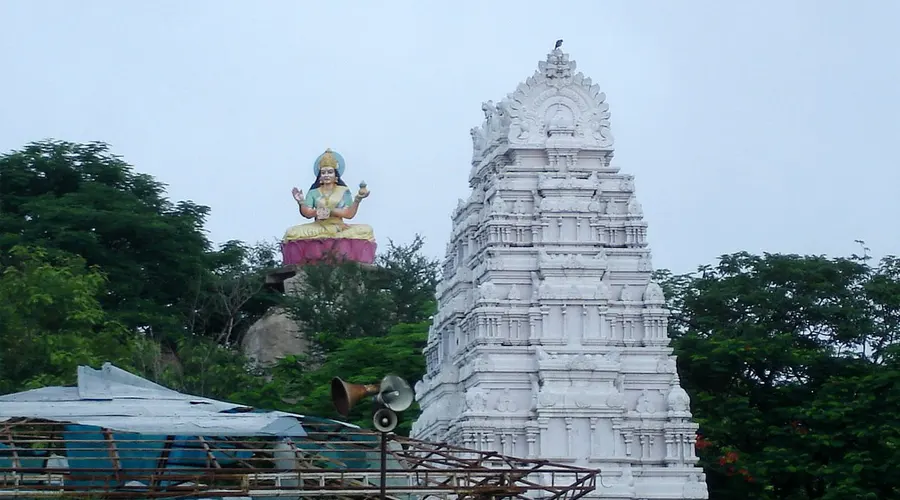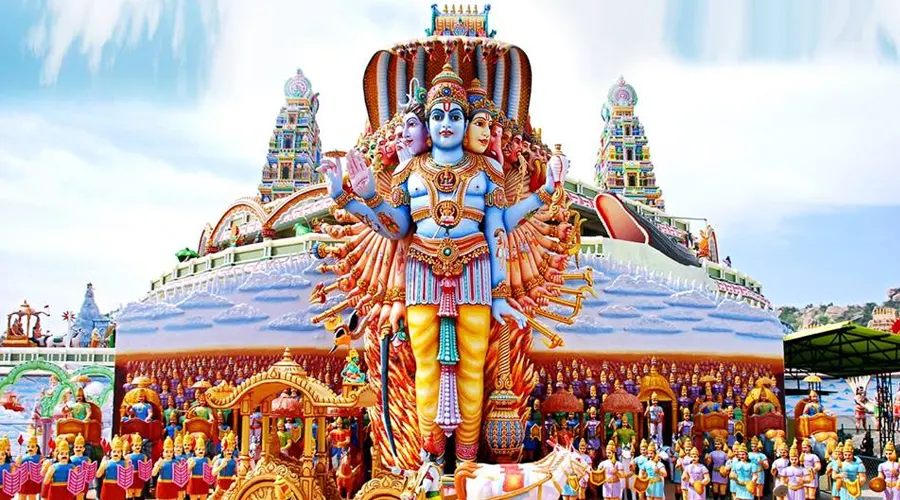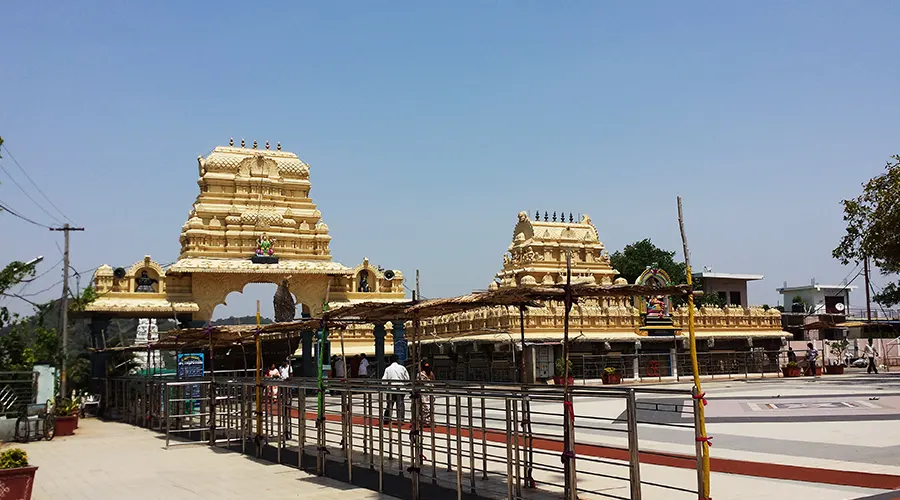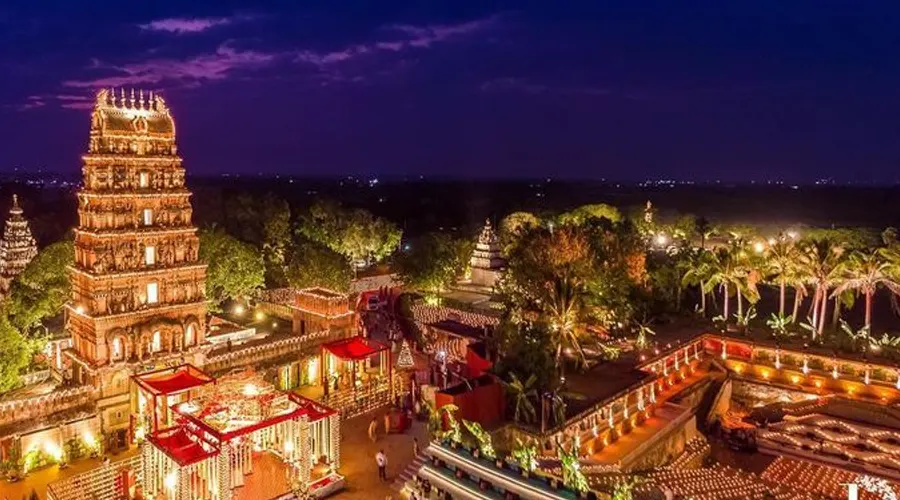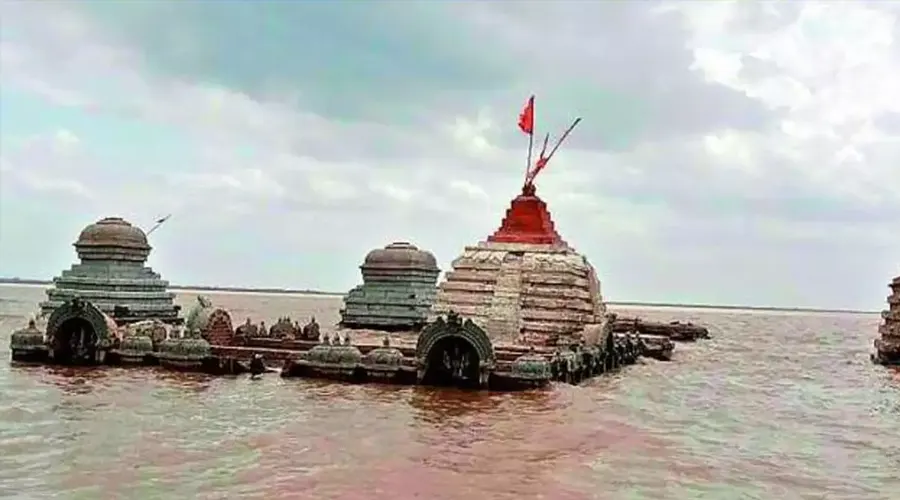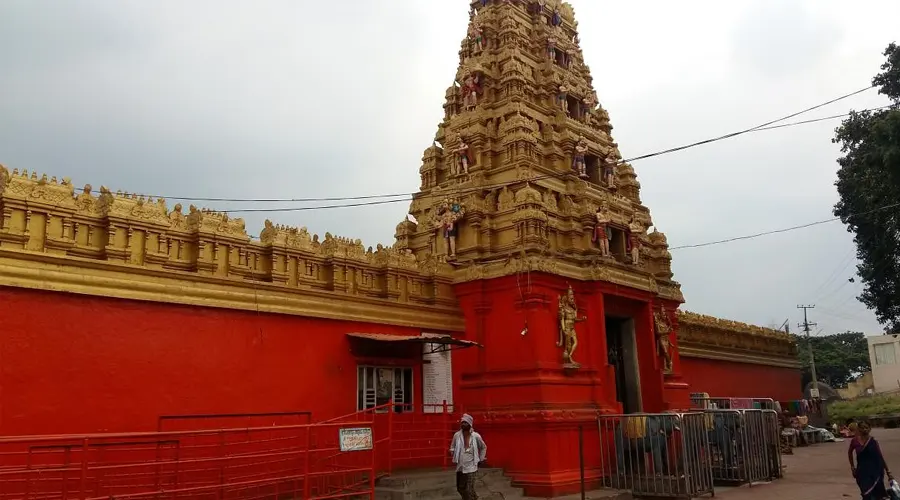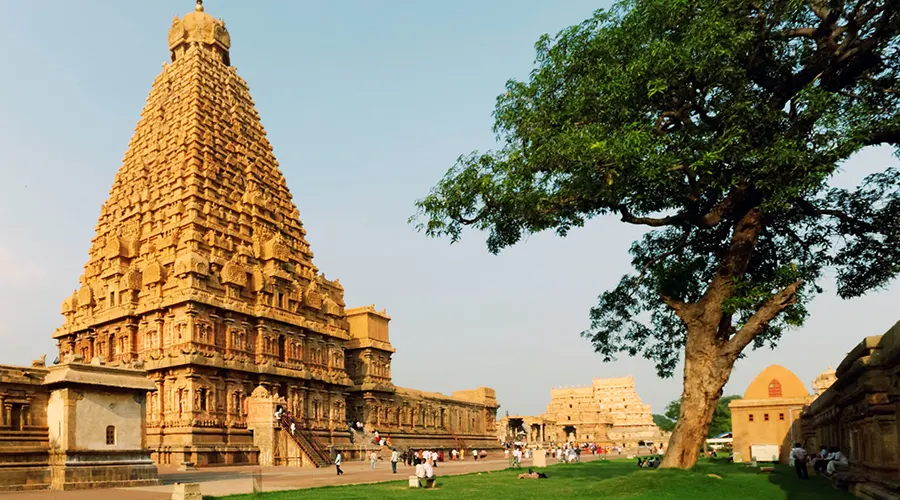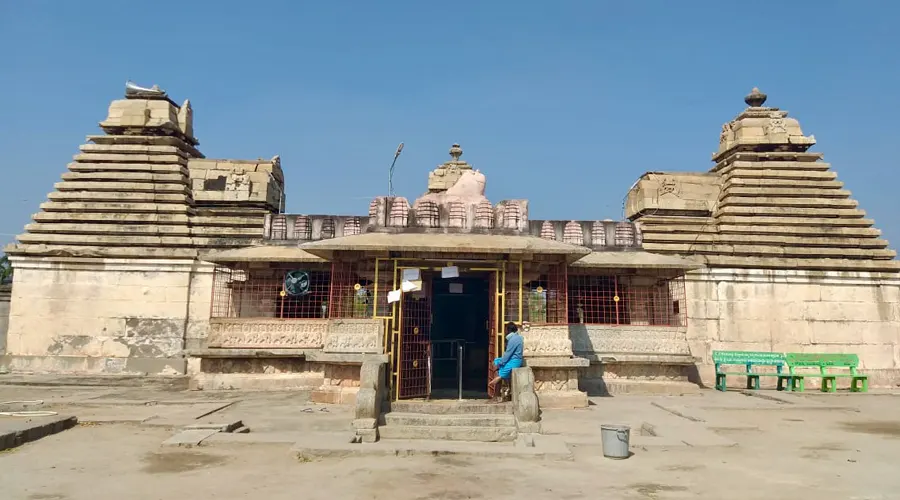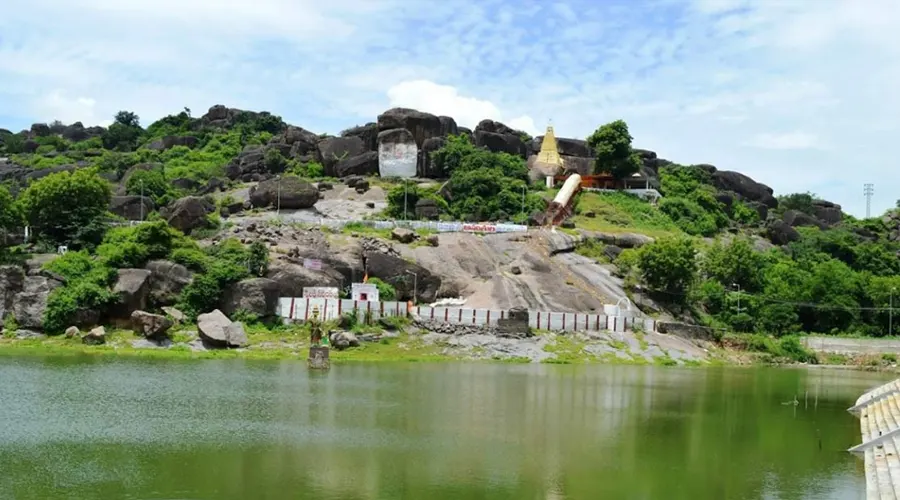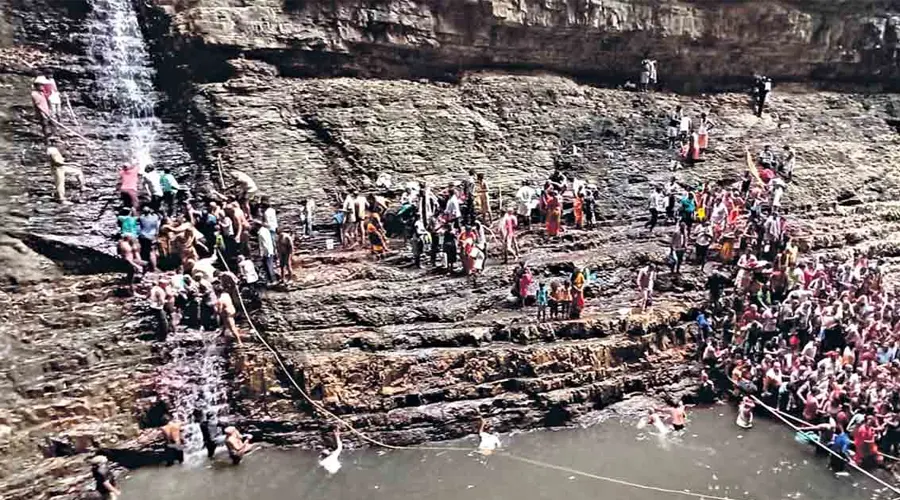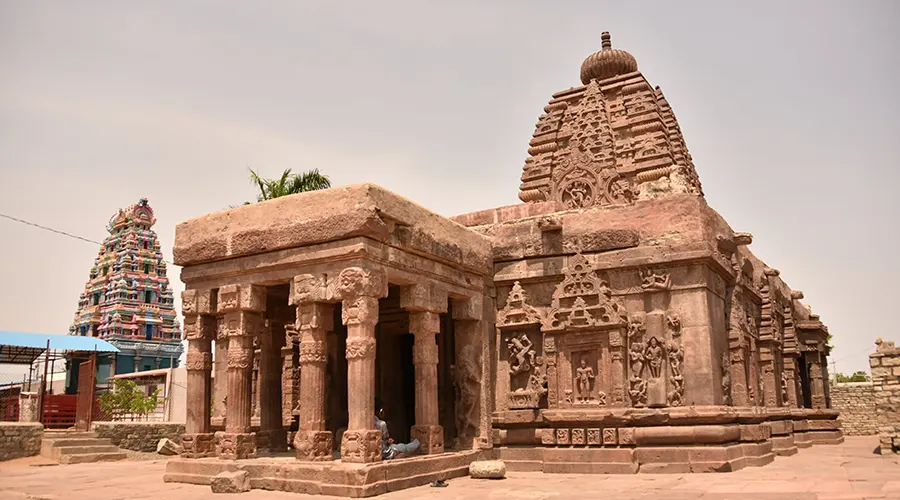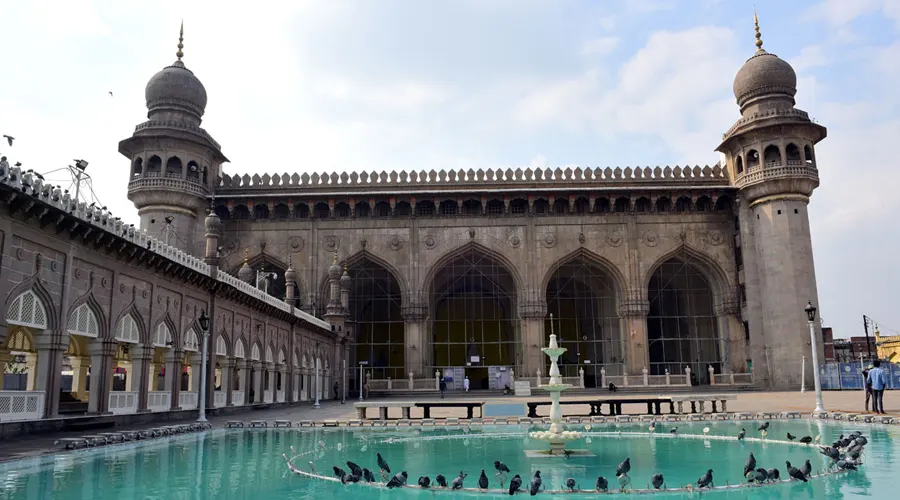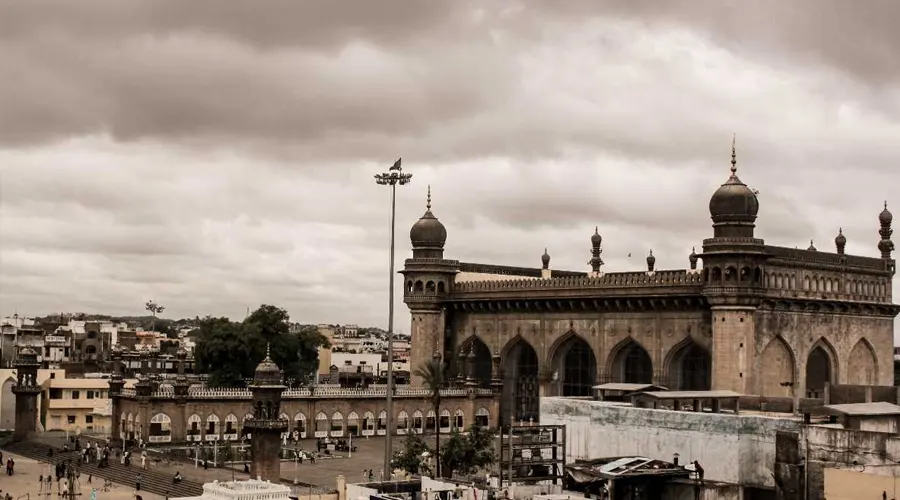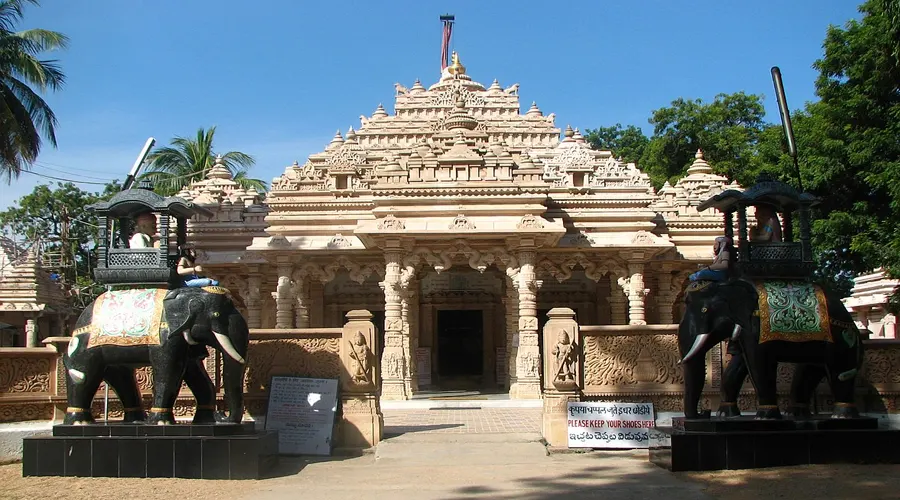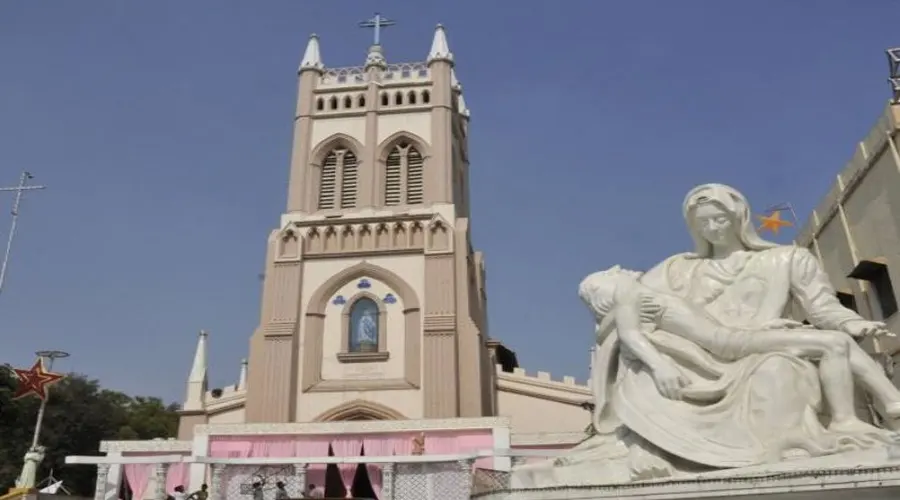Sri Lakshmi Narasimha Swamy Temple
The Lakshmi Narasimha temple is Lord Narasimha's (embodiment of Lord Vishnu) abode. Due to its popularity, the temple is always bustling with devotees performing different types of darshans. The temple is located in a cave on a knoll in the Yadadri Bhuvanagiri district. There are several chambers inside the temple, so it's worth taking a peaceful stroll on an evening and admiring the striking sculptures of deities spread all over the place.
After many years had passed, the Lord appeared in the dream of a devout lady among the tribe, directing her to a large cavern wherein He revealed Himself to all as five majestic Avatars. Pleased with his deep devotion, Lord Narasimha, an incarnation of Lord Vishnu appeared before him in five different forms as Sri JwalaNarasimha, Sri Yogananda, SriGandabherunda, Sri Ugra, and Sri Lakshminarasimha. All these five forms (roops) are presently worshipped within the temple.
They later manifested themselves into finely sculpted forms that later came to be worshiped as Pancha Narasimha Kshetram. There are Purana and traditional accounts of this Shrine, which are widely popular among the devotees. There is mention of the origin of this temple in the Skanda Purana, one of the famous 18 Puranas.
History of Sri Lakshmi Narasimha Temple
Yadagirigutta is a census town in the Nalgonda district now in the Indian state of Telangana.
In Tretayugam, there lived a sage by the name of Yadarishi, son of the great sage Rishyasrunga and Santa Devi who did penance inside a cave with the blessings of Anjaneya (Hanuman) on this hill between Bhongir (Bhuvanagiri) and Raigiri (Now in Nalgonda district of Telangana, India). Pleased with his deep devotion, Lord Narasimha, an incarnation of Lord Vishnu appeared before him in five different forms as Sri JwalaNarasimha, Sri Yogananda, Sri Gandabherunda, Sri Ugra, and Sri Lakshminarasimha. All these five forms (roops) are presently worshipped within the temple. They later manifested themselves into finely sculpted forms that later came to be worshiped as Pancha Narasimha Kshetram.
There are Purana and traditional accounts of this Shrine, which are widely popular among the devotees. There is mention of the origin of this temple in the Skanda Purana, one of the famous 18 Puranas. Glowing bright atop the Sikharam of garbha griha (Sanctum Sanctorum) of this cave temple is the golden Sudarshana Chakra (about 3 ft x 3ft) of Lord Vishnu (whose reincarnation is Lord Narasimha), the adornment, as well as the weapon, is a symbol this temple is identified by from as far away as 6 km. It is said that many years ago the chakra moved in the direction from which the devotees came as if like a compass guiding them towards the temple. The Chakra Considered to posses mystic power and value, at times turns on its own; no human hand is capable of turning it.
Another Legend also has it that Sriman Narayana, pleased with Yada’s penance, sent Sri Anjaneya to direct the rishi to a holy spot, where the Lord appeared to him in the form of Sri Lakshmi Narasimha. This spot is marked by a temple located at the foot of the Yadagiri hillock and is located about 5 km from the present temple. There the sage worshiped the Lord for many years.
After Yadarishi attained moksha, several tribals, hearing of the Lord’s presence, came to worship Him at this temple. But, not being very learned, these devotees began to engage in improper worship. Because of this, Sri Lakshmi Narasimha moved into the hills. The tribals searched for many years to find their Lord, to no avail.
After many years had passed, the Lord appeared in the dream of a devout lady among the tribe, directing her to a large cavern wherein He revealed Himself to all as five majestic Avatars.
The Aradhana and Puja in this temple are performed according to Pancharatra Agama. The puja Vidhanam (Puja procedure) was set by Late Sri Vangeepuram Narasimhacharyulu who composed Yadagiri Suprabhatam, Prapatti, Stotram, Mangalashasanam and served as Sthanacharya of this temple.
Architecture of Sri Lakshmi Narasimha Temple
Glowing bright atop the sikharam of garbha griha (Sanctum Sanctorum) of this cave temple is the golden Sudarshana Chakra (about 3 ft x 3ft) of Lord Vishnu (whose reincarnation is Lord Narasimha), the adornment, as well as the weapon, is a symbol this temple is identified by from as far away as 6 km. It is said that many years ago the chakra moved in the direction from which the devotees came as if like a compass guiding them towards the temple.
The Chakra Considered to posses mystic power and value, at times turns on its own; no human hand is capable of turning it. Another Legend also has it that Sriman Narayana, pleased with Yada’s penance, sent Sri Anjaneya to direct the rishi to a holy spot, where the Lord appeared to him in the form of Sri Lakshmi Narasimha. This spot is marked by a temple located at the foot of the Yadagiri hillock and is located about 5 km from the present temple. There the sage worshiped the Lord for many years.
After Yadarishi attained moksha, some tribals, hearing of the Lord’s presence, came to worship Him at this temple. But, not being very learned, these devotees began to engage in improper worship. Because of this, Sri Lakshmi Narasimha moved into the hills. The tribals searched for many years to find their Lord, to no avail.
After many years had passed, the Lord appeared in the dream of a devout lady among the tribe, directing her to a large cavern wherein He revealed Himself to all as five majestic Avatars.
The Aradhana and Puja in this temple are performed according to Pancharatra Agama. The puja vidhanam (Puja procedure) was set by Late Sri Vangeepuram Narasimhacharyulu who composed Yadagiri Suprabhatam, Prapatti, Stotram, Mangalashasanam and served as Sthanacharya of this temple.

